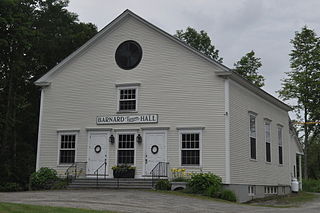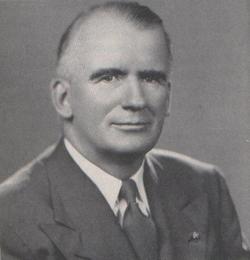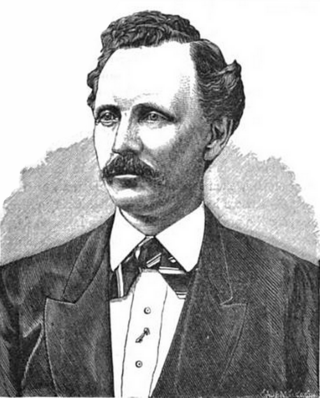Related Research Articles

Clackamas County is one of the 36 counties in the U.S. state of Oregon. As of the 2020 census, the population was 421,401, making it Oregon's third-most populous county. Its county seat is Oregon City. The county was named after the native people living in the area at the time of the coming of Europeans, the Clackamas people, who are part of the Chinookan peoples.

Woodstock is a city in McHenry County, Illinois, United States. It is located 51 miles northwest of Chicago, making it one of the city's outer-most suburbs. Per the 2020 census, the population was 25,630. The city's historic downtown district and turn-of-the-century town square is anchored by the landmark Woodstock Opera House and the Old McHenry County Courthouse. In 2007 Woodstock was named one of the nation's Dozen Distinctive Destinations by the National Trust for Historic Preservation.

Putney is a town in Windham County, Vermont, United States. The population was 2,617 at the 2020 census.

Barnard is a town in Windsor County, Vermont, United States. The population was 992 at the 2020 census.

Weathersfield is a town in Windsor County, Vermont, United States. The population was 2,842 at the 2020 census.

Brattleboro, originally Brattleborough, is a town in Windham County, Vermont, United States, located about 10 miles (16 km) north of the Massachusetts state line at the confluence of Vermont's West River and Connecticut. With a 2022 Census population of 12,106, it is the most populous municipality abutting Vermont's eastern border with New Hampshire, which is the Connecticut River.

The Vermont Republic officially known at the time as the State of Vermont, was an independent state in New England that existed from January 15, 1777, to March 4, 1791. The state was founded in January 1777, when delegates from 28 towns met and declared independence from the jurisdictions and land claims of the British colonies of Quebec, New Hampshire, and New York. The republic remained in existence for the next fourteen years, albeit without diplomatic recognition from any foreign power. On March 4, 1791, it was admitted into the United States as the State of Vermont, with the constitution and laws of the independent state continuing in effect after admission.

Frederick Warren Cozens was an American college basketball, football, and boxing coach. He was the first head coach of both basketball and football at UCLA and served as the school's athletic director from 1919 to 1942.
Phineas White was an American lawyer and politician. He served one term as United States Representative from Vermont from 1821 to 1823.

John Homer Caldwell is a retired American nordic skier who competed in the 1952 Winter Olympics, then became a cross-country ski coach and authority on cross-country skiing. He wrote a series of books that helped popularize and develop understanding of recreational cross-country skiing in the United States. Consequently, Caldwell has been called the "father" and "guru" of Nordic skiing in North America.

Samuel Barrett Pettengill was a U.S. representative from Indiana, representing Indiana's 3rd congressional district and nephew of William Horace Clagett.

Charles Sedgwick May was an American politician and the 16th lieutenant governor of Michigan.

Cleveland Salter Rockwell was an American topographical engineer, cartographer, military officer, investor, and landscape painter. He spent his professional career as a survey engineer in the United States Coast and Geodetic Survey. Rockwell conducted numerous coastal surveys and mapped harbors and river systems on the Atlantic and Pacific coasts of the United States. He also surveyed areas in South America. During the American Civil War, Rockwell served as a captain in the Union Army. After retiring from the Coastal Survey, he became a successful investor and landscape painter. Today, Cleveland Rockwell's topographical maps are important historical documents and his art work is well known in the Pacific Northwest.

Oregon is a state in the Pacific Northwest region of the United States. It is a part of the Western U.S., with the Columbia River delineating much of Oregon's northern boundary with Washington, while the Snake River delineates much of its eastern boundary with Idaho. The 42° north parallel delineates the southern boundary with California and Nevada. The western boundary is formed by the Pacific Ocean.

Lawrence Joseph Brignolia, sometimes Brignoli, was an American long-distance runner and sculler of Italian descent. He won the third running of the Boston Marathon, in 1899. A 161-pound (73 kg) blacksmith, he remains the heaviest person ever to claim victory in the event. He was the only runner to finish each of the first three Boston Marathons, and one of two runners who participated in each of the first four.

Edward Higginson Williams was an American physician and railroad executive known for his philanthropy.

Isaac Fletcher Redfield was an American lawyer, judge, and legal scholar. He was most notable for his service as an associate justice of the Vermont Supreme Court from 1836 to 1852 and chief justice from 1852 to 1859.

Karl McDade was an American professional football center and linebacker who played for the Pittsburgh Pirates of the National Football League (NFL) for one season in 1938.
References
- ↑ Members 1-500 listed at California Ski Patrol website.
- ↑ Vermont Department of Health. Vermont Death Index 1981-2001. Burlington, VT, USA: Vermont Department of Health, 2001
- ↑ Portland Oregon births, from Oregon Historical Records Index
- ↑ 1870 Philadelphia Ward 22 District 72 Federal Census
- ↑ 1900 District 58, Portland Ward, Multnomah County, Oregon, United States Federal Census
- ↑ Boyd, John; Annals and Family Records of Winchester, Conn.; Hartford, 1873
- ↑ 1860 Hoboken, Hudson County, NY United States Federal Census.
- ↑ 1910 Philadelphia Ward 22, Philadelphia County, Pennsylvania United States Federal Census
- ↑ 1920 Chicago Ward 6, District 352, Illinois United States Federal Census
- ↑ United States, Selective Service System. World War I Selective Service System Draft Registration Cards, 1917-1918. Washington, D.C.: National Archives and Records Administration. M1509, 4,582 rolls. Imaged from Family History Library microfilm.
- ↑ 1930 Cambridge District 51, Middlesex County, Massachusetts United States Federal Census
- ↑ "Contemporary Authors", Thomson Gale, January 1, 2004
- ↑ Unpublished autobiography ca. 1980
- ↑ Vermont Department of Health. Vermont Death Index 1981-2001. Burlington, VT, USA: Vermont Department of Health, 2001